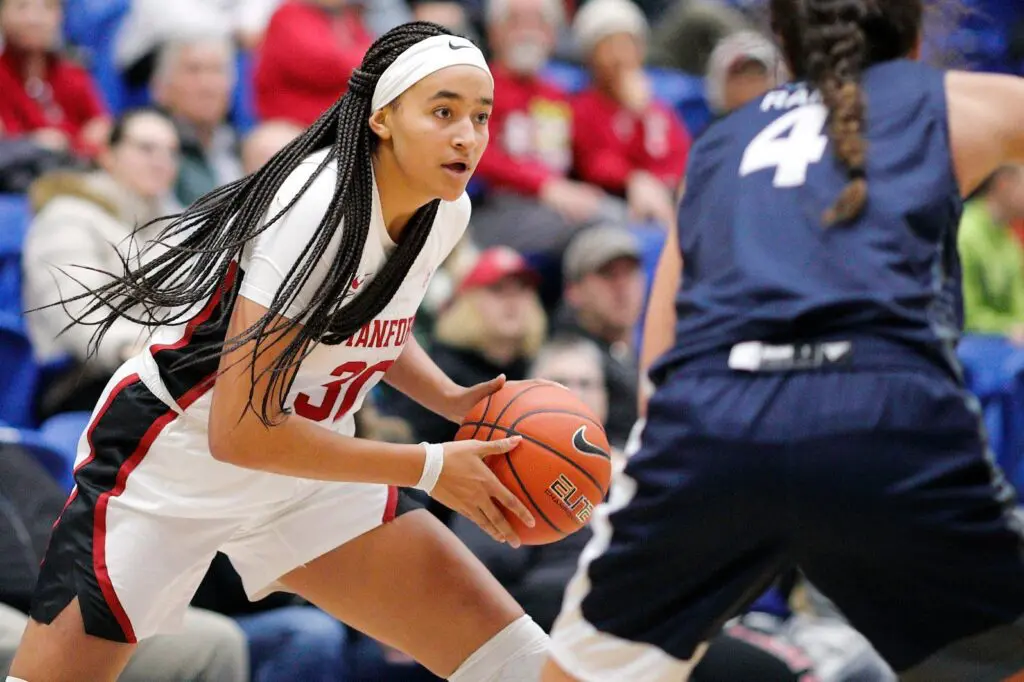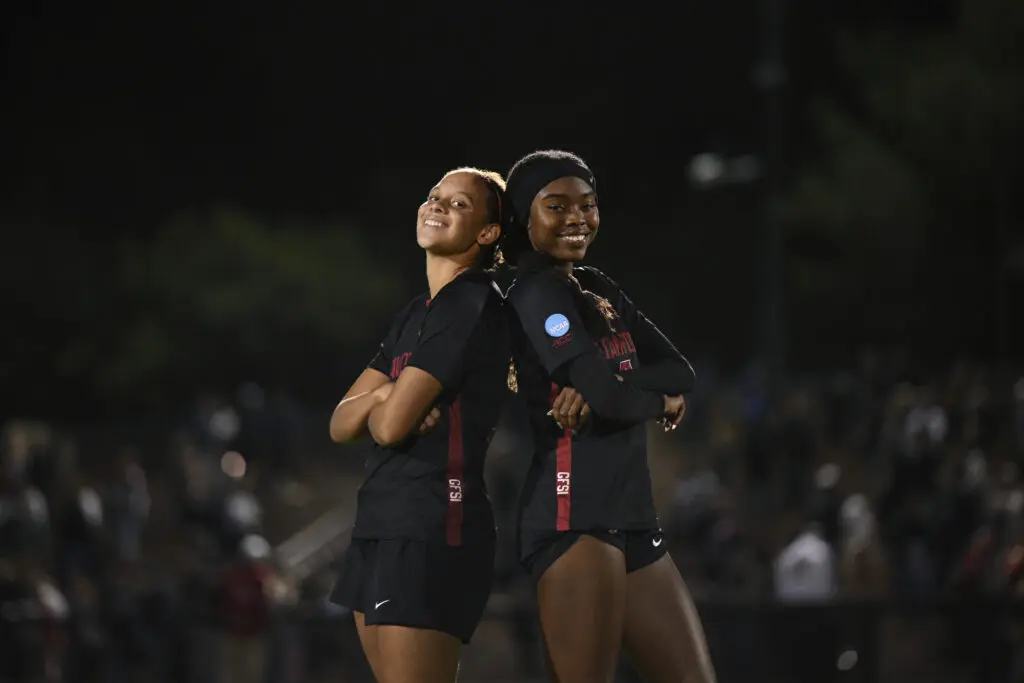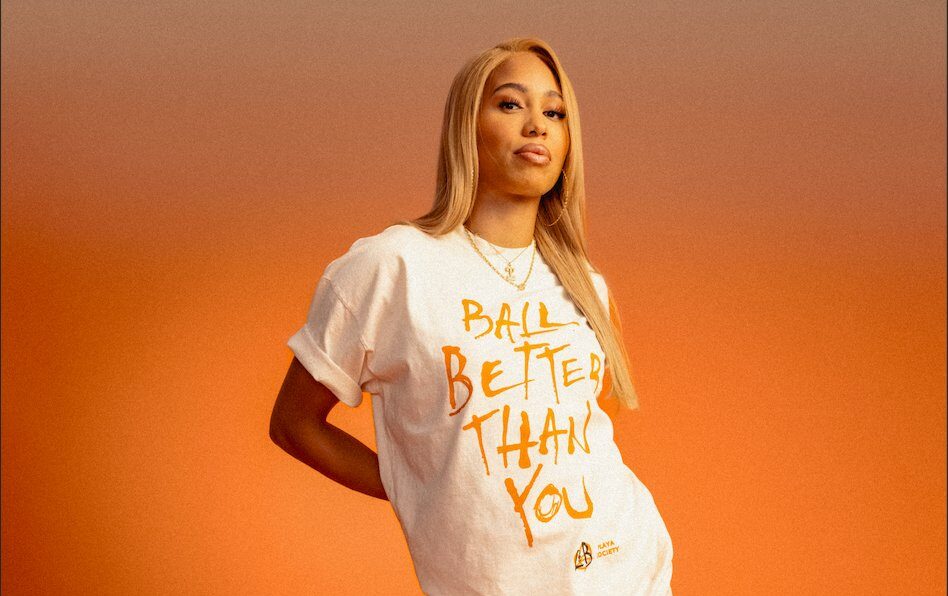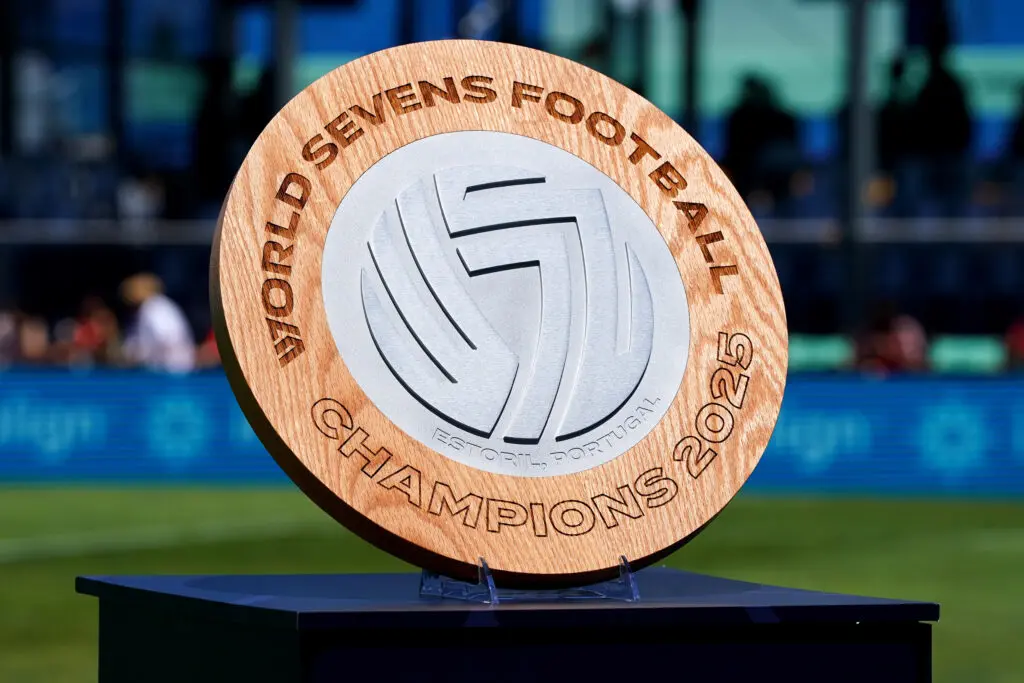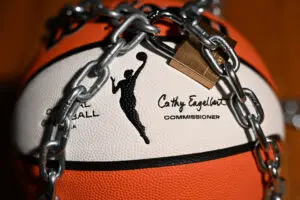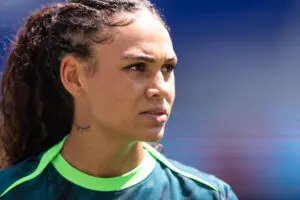The first No. 1 recruit to join Stanford women’s basketball since 2010, Haley Jones is a rising sophomore originally from Santa Cruz, California. This year, the 6’ 1 guard became the first Stanford freshman since 2001 to score in double figures in the first four conference games, before being sidelined with an injury after the season’s first 18 games. Prior to her injury in January’s game against Oregon State, Jones was named a Pac-12 Freshman of the Week three times.
[Editor’s note: this interview took place before the Pac-12 announced it was postponing all sports, including basketball, to 2021]
What has your day-to-day looked like during the pandemic?
I ended my first season at Stanford with a knee injury, so I’ve been spending a lot of quarantine doing physical therapy and recovering from home. Basketball-wise, I’ve been able to do a little bit of on-court stuff, and I was busy with schoolwork, because I took on more units now that classes are online.
Any recommendations for good Netflix shows or fun hobbies?
Some other freshman teammates and I just discovered Netflix party. We watched season two of Dead to Me and we’ll be watching Dynasty now that it’s out. I’m trying to force my brother to watch Game of Thrones with me because that’s my favorite show ever.
As for hobbies, my mom is the greatest chef ever, so we’ve been putting all of her recipes ever into Evernote. Now I’m going to have all her recipes – I’ve been baking up a storm.
Going back a bit, how did you start playing basketball?
My parents were varsity coaches at the local high school. I grew up being at practices, games, in the gym. Girls on the teams they coached were my role models. They would always want to babysit me, and I’d run around with them at the gym.
I played a bunch of different sports when I was younger. I did water polo, volleyball, soccer – I did everything. I started playing “real” basketball around third grade when I first played on a travel team. Most of my teammates were mostly in the fifth grade. People always ask me how I play guard when I’m so big – it’s because I played above my age group when I first started playing basketball. Naturally, I was always the smallest on my team and had to play guard. Once I started playing for my actual age group, I became the biggest one but still had guard skills.
How else did playing above your age group impact the way you play?
Playing up always forced me to push myself. None of the girls that I ever played with ever took it easy on me just because I was younger, and that really helped build my competitive spirit. I’ve always wanted to be the type of kid that wanted to play against the best player, and playing up gave plenty of learning opportunities.
In high school you were rated as the No.1 player in the country – you’re the first No.1 prospect to sign with Stanford since Chiney Ogwumike. How did you decide to attend Stanford?
I first started getting recruited around the spring of seventh grade. By junior spring, I narrowed it down to around eleven schools. The summer between my junior and senior year, I narrowed my choices down to five schools: Notre Dame, Oregon, South Carolina, Stanford and UConn. I made five official visits and waited until the last possible day to decide to sign with Stanford.
I was the first female recruit to sign live on ESPN, which was so cool. They came to my school with donuts with my face on it. I was like, “Oh, this is the real deal – this is my peak.”
My non-negotiable criteria when choosing a school included academics, future teammates and classmates. Everything from the coaches, to the opportunities I’d get at Stanford to the people I’d interact with on a day to day basis – it’s an experience I wouldn’t have gotten anywhere else.
And my expectations were true for the most part. For example, my freshman roommate who I was randomly assigned to – she’s the GOAT. She has her own nonprofit organization. It’s so cool getting immersed into these different communities; At Stanford, the athletes don’t feel separated from the rest of the community. And my team is amazing. They are some of my best friends now – they’re basically family.
At Stanford, you started off with an incredibly strong first season. You were the first freshman to score in double figures in the first four conference games since 2001. What was it like to transition to college basketball?
Coming to college, everyone on your team was that player on their high school team. They were that player on the AAU team. Everyone on our team was recruited because they played at the same level as me. I was so excited to get to play with everyone, because I saw it as an opportunity to make me better. No matter who you’re guarding, it’s a challenge. You can take them – and they can take you – on every given play. I had to understand that I was going to have to be competitive to get play time. But this competition came from a place of wanting to lift each other up.
Another thing about playing at the collegiate level that was so different was the pace. Pace is a mental challenge that you have to keep at the front of your mind at all times.
You had to stop playing after the first 18 games due to a knee injury. How are you overcoming this setback?
That game against Oregon State feels just like yesterday. I went down, twisted my leg – I just remember I was trying to stand up and couldn’t put any weight on it.
I’ve never had an injury before where I had to sit out of the season for so long. At first, it just took me a bit to come to terms with why this happened. You know, why me? Why now? My teammates were there for me every step of the way. Even so, it was really hard not getting to travel with them. It was weird not being at practice all the time, because I’d be at doctor’s appointments and physical therapy.
Additionally, it was really hard changing physical therapists from Stanford to ones local to home because of the pandemic.
I don’t want to say getting injured was a good thing, because it’s not. But, I think that my injury opened up new experiences. I’ve never really been on the sidelines. I really got to understand our system from a different point of view by watching our team and our games. I really got to understand all my different teammates’ tendencies. Usually during drills, I’m just focused on myself. But now I know where my teammates like to be on the floor – I got to talk to Kiana and Lexie a lot just about different things that they’re seeing on the floor so that when I’m able to come back, I can help them carry those ideas out. I’m able to hit them at the places they want to be hit. I think when I come back, I’ll really be able to understand everyone better.
Have you been keeping in touch with your teammates since your season was cut short?
One afternoon, Coach Tara VanDerveer called us. All of us on the team got in our circle in our locker room with all our staff, and she told us it was the end for this season. Just understanding that was the last time that this special group of people were all going to be together was really hard to grasp. The moment we got out of that meeting we were all looking for flights back home. It was a really abrupt ending to the season and that special team we had.
But since returning home, we’ve had a lot of Zoom calls with the coaches, which are fun. As a team, we text and Snapchat all the time. We get on team Zoom calls without coaches just to hang out and chat. I’m FaceTiming with the freshmen every day. We send each other memes. We’re trying to start Netflix partying shows together.
Certainly there’s a lot of uncertainty today and it’s hard to make plans for the future. With this in mind, do you have goals for your collegiate career? Are any post-college plans on your radar yet?
For my collegiate career, I’m not really thinking long-term right now. I’m really just thinking about how I want to come back this year. I’m not trying to come back as the same player I was before my injury – I’m trying to be better than I was. Post-college, professional basketball has always been a dream, but you never know what’s going to happen.
